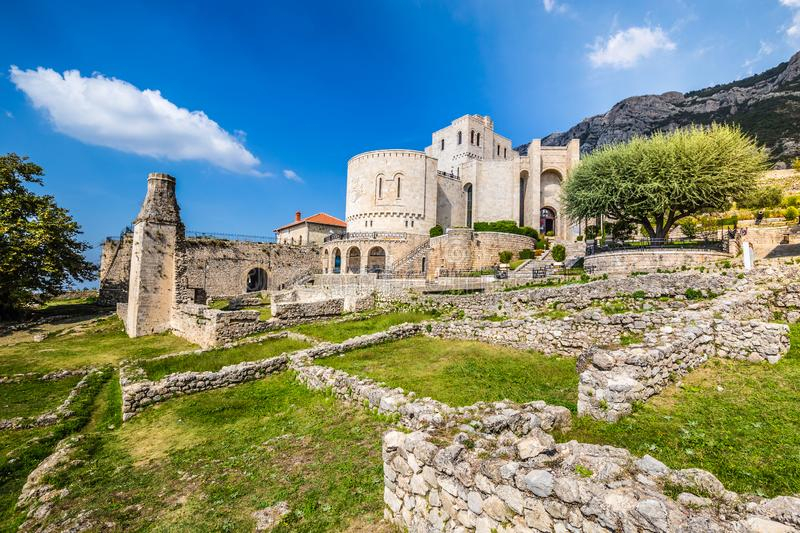Kruje Castle
The Kruje Castle is a castle in the Albanian city of Kruje that served as the focal point of Skanderbeg's resistance against the Ottoman Empire. The Teqe of Dollme of the Bektashi (an Islamic Sufi sect), the National Skanderbeg Museum, the remnants of the Fatih Sultan Mehmed mosque and its minaret, an ethnographic museum, and a Turkish spa are all housed within the castle.
The history of Kruje Castle is associated with the Albanian people. This castle is one of the most popular tourist destinations in Albania. One of the greatest attractions is the National Museum "George Castroti Skanderbeg," which is housed within the fortification (Muzeu Kombetar "Gjergj Kastrioti Skenderbeu" in Albanian). Architects Pranvera Masha and Pirro Vaso designed this museum in the early 1980s. Inside the museum, there is a large collection of original books, documents, artefacts, and authentic replicas that depict the history of the Albanian people in the fifteenth century. This museum has become a metropolitan skyline landmark.
Andrea Thopia unsuccessfully besieged the city during the Albanian Revolt of 1432-1436, and Ottoman authority was restored. Following Skanderbeg's insurrection in 1443, the fortress withstood three enormous Turkish sieges in 1450, 1466, and 1467, with garrisons often no bigger than 2,000-3,000 men under Skanderbeg's leadership. Mehmed II "The Conqueror" could not breach the castle's meager fortifications until 1478, ten years after Skanderbeg's death. Today, it is a tourism hub in Albania and a source of inspiration for locals. Kruje Castle is located at a height of 557 meters (1,827 ft)
Location: Kruje, Albanie









